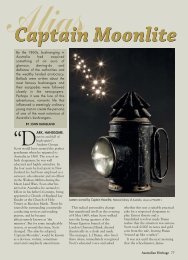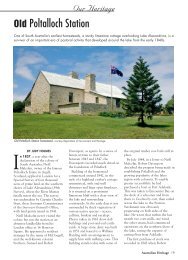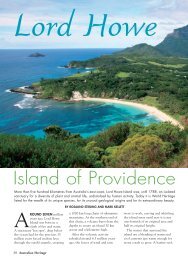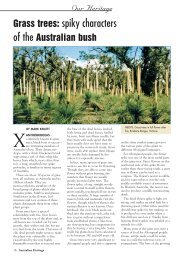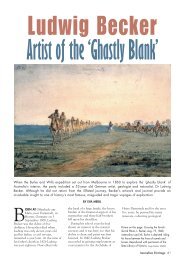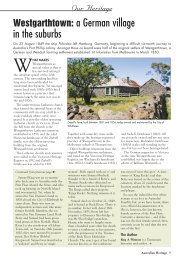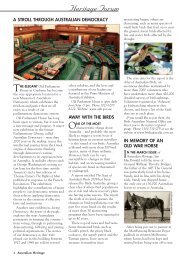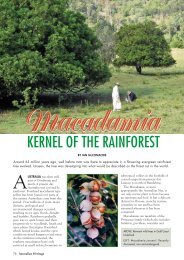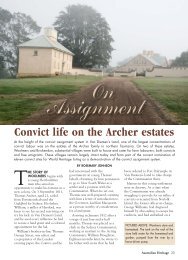Heritage 0609_Zoo.pdf - Australian Heritage Magazine
Heritage 0609_Zoo.pdf - Australian Heritage Magazine
Heritage 0609_Zoo.pdf - Australian Heritage Magazine
Create successful ePaper yourself
Turn your PDF publications into a flip-book with our unique Google optimized e-Paper software.
However, Le Souëf had another<br />
motive in crying poor. From its<br />
beginning, entry to the zoo had<br />
been free; the zoo derived its<br />
income from membership fees and<br />
from government grants. By<br />
charging admission, it could gain<br />
some degree of financial<br />
independence. Though unhappy<br />
with the idea, in 1881 the Victorian<br />
government allowed the zoo to<br />
charge admission from Monday to<br />
Saturday. Sunday remained free<br />
until 1912, mainly because the<br />
Lord’s Day Observance Society<br />
lobbied to close any business or<br />
institution that opened on a Sunday<br />
if it was seen to make a profit. As a<br />
result, the zoo was one of the few<br />
recreational facilities open on<br />
Sundays, and it not infrequently<br />
attracted crowds of up to<br />
40,000 people.<br />
Albert Le Souëf’s work in<br />
developing the zoo was recognised<br />
in 1882, when he was appointed<br />
Director of the Melbourne <strong>Zoo</strong>.<br />
ABOVE: The Melbourne <strong>Zoo</strong>’s first elephant, Ranee, was purchased in 1883 and put to<br />
work giving rides. In 1902, her job was taken over by Queenie who, for more than 40<br />
years carried up to 500 children a day. Courtesy State Library of Victoria, H 33671/36.<br />
BELOW: Today, five elephants live together in Melbourne <strong>Zoo</strong>’s Trail of the Elephants,<br />
and clearly enjoy each other’s company. Photo courtesy Melbourne <strong>Zoo</strong>.<br />
<strong>Australian</strong> <strong>Heritage</strong> 53




